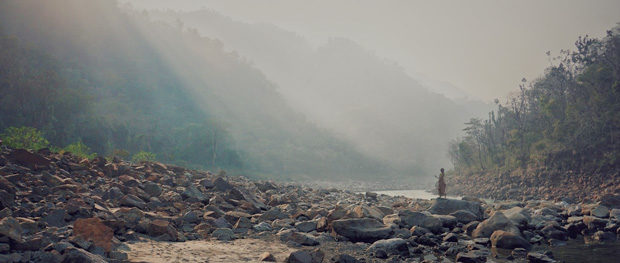I’ve enjoyed preparing this brief guide. It’s helped me to understand some of the finer details of how fortunate I was to stumble upon a modern way to experience pure consciousness and discover that it led to inner peace and happiness.

There’s lots of material about Nisargadatta and U.G. Krishnamurti on the Internet. I haven’t found any mention of Doctor Sahib besides the brief note in this website. This is what he would have preferred as he never sought an audience larger than could sit on the the floor of his small living room.
The books that I mentioned are all available as free downloads from the Internet:
>“The Mystique of Enlightenment” is U.G. Krishnamurti’s account of his own enlightenment and subsequent attempts to destroy the myths surrounding the subject. When I met him in 1980 he spoke in a much more down to earth manner than this book suggests. But it’s still the most readable of the books mentioned in this brief guide.
There are lots of film and video interviews of U.G. on the internet. They also bear little resemblance to the man I visited in a Bombay apartment in 1983. He spoke an a very straightforward, down-to-earth manner about how the Sense of Self had uninstalled and how enlightenment was a “catastrophe”: It was not a spiritual awakening but just a physiological event.
I visited him for an hour or so for the 10 days he was staying in Bombay. My spiritual education started when I met him and ended when he flew off to Germany. An extraordinary person, and an extraordinary education!
>“I Am That”, about Nisargadatta, is less easy to read as he speaks in a more traditional Hindu way than U.G. Krishnamurti. But when I visited him in 1980 he answered questions in a more direct and straightforward manner than in this book. In his own way he taught much the the same as U.G. Whatever spiritual practices people mentioned to him he’d reply: “That’s not it”: spiritual practices merely strengthen the Self of Self and cannot free you from it.
The Sense of Self that creates the illusion of our individuality. He pointed out that in reality we are just a “food-body” that’s born to eat, grow, procreate and die.
>“Patanjali’s Yoga Sutras” is one of the most important ancient spiritual texts. It was written about 2000 years ago by the Indian sage, Patanjali, but only the list of chapter headings, or lecture topics (sutras) has survived. The first few sutras concern “stilling the mind” and pure consciousness, which is the subject of this brief guide. The remainder are a comprehensive index of spiritual knowledge and philosophies known at that time. Unfortunately the lectures themselves have not survived.
Explanations of each sutra have been added later in excruciating technical spiritual detail – obviously by learned people who have never experienced pure consciousness or “stilling the mind”.
>“The Collected Works of Ramana Maharshi” contains Ramana’s own account of his enlightenment. It’s a very large and comprehensive volume of Ramana’s words, writings and life. It’s very much about Hinduism and may not make much sense to western spiritual seekers.
In the following pages you’ll find more information about the Sense of Self, a Q & A section, some thoughts about science and spirituality, and the essential disclaimer.
Spiritual enquiry
Stumbling into it
Some extras
Disclaimer
